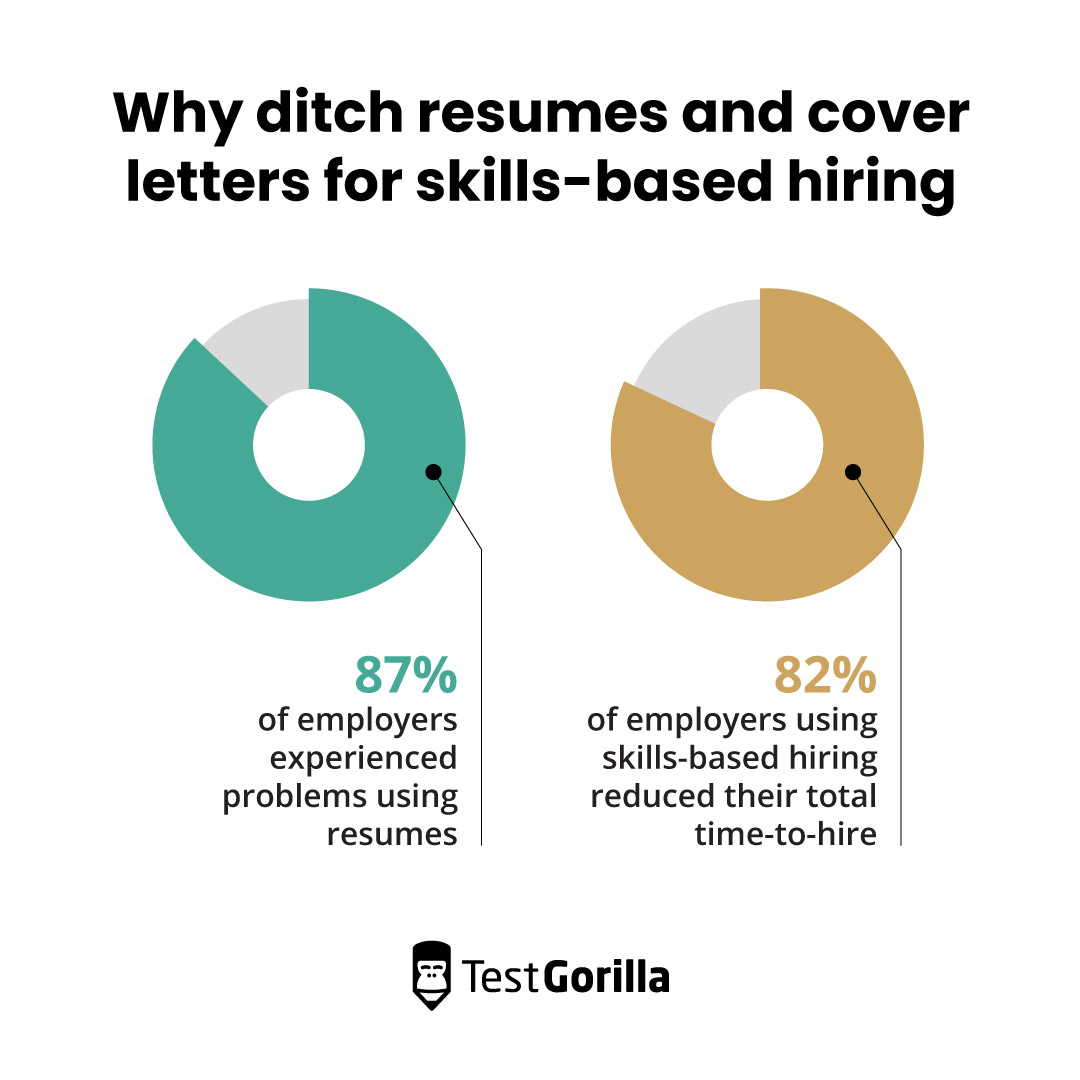Fast-growing companies need fast recruitment: 6 efficient hiring solutions
Sure, scaling fast is a “good problem to have.” But it can also quickly become your worst nightmare. When your company is experiencing a growth spurt, you may not have the workforce needed to meet escalating business demands. You’ll need more employees ASAP – and not hiring fast enough could mean losing business, damaging customer trust, and angering investors.
However, the pressures of fast recruitment can also lead to rushed decision-making and mis-hiring. This then disrupts growth, stifles revenue, and ruins your reputation with customers and investors.
The solution? Hire fast, but hire right.
In this guide, we share six efficient solutions to help you accelerate your recruitment process while still attracting and selecting the best candidates.
Table of contents
What is fast recruitment?
Fast recruitment refers to the process of swiftly identifying, attracting, assessing, and hiring qualified candidates for open positions within a company to meet business needs. It involves streamlining and expediting your recruitment process without compromising on the quality of your hires.
Why do fast-growing companies look to recruit fast?
Here’s why rapidly growing companies may need to make quick hires.
Demand is building
Let’s say your product has gone viral on social media, but you don’t have enough of it to meet growing demand. You must enhance your resources – including the size of your workforce – to scale up supply. Failing to meet customers’ needs fast enough leads to missed opportunities, and long wait times can lead to lost interest.
Investors are breathing down your neck
Receiving venture capital or other forms of funding brings the pressure to hit business targets within a certain timeframe. Whatever your goals are – accelerating tech, increasing customer acquisition, or improving sales – you’ll need to make quick and effective hires to meet them.
You’re losing employees to fast-growing competitors
Sometimes, a fast-growing company results from a rapidly scaling industry. For example, fintech companies have been booming and hiring explosively over the last decade. This can lead to higher turnover as other job opportunities draw in employees.
Fast-growing companies in this position must invest in continuous recruitment efforts to ensure they stay well-resourced.
Skills gaps are widening
Fast growth can also result from advancing technology and the evolving need for specific skills. For instance, the Tencent Research Institute found that millions of AI roles are in demand following revolutionary developments in artificial intelligence (AI) – but only 300,000 AI practitioners are available worldwide.
Companies battling to hire AI engineers before their competitors need fast recruitment.
6 ways to recruit faster – without compromising your hiring outcomes
Here are six effective ways to hire faster:
Target active candidates who are ready to move
Ditch resumes and cover letters for online testing
Limit the interview process
Say goodbye to “FOBO” (fear of better options)
Don’t put all your eggs in one basket
Consider quiet hiring
Below, we break these down for you.
1. Target active candidates who are ready to move
Harvard Business Review reports that 86% of recruiters focus on passive candidates – experienced professionals who aren’t looking to move. This is because recruiters often assume active candidates are seeking new opportunities because they’re dissatisfied with their current roles or because their employers are dissatisfied with them. something might be wrong with active candidates already seeking job opportunities and wanting to leave their current jobs.
This couldn’t be further from the truth. Active candidates don’t always move due to an issue with themselves or their existing companies. Harvard Business Review explains that professionals primarily move for better career opportunities, demonstrating that they’re ambitious and proactive in growing their careers.
On the other hand, convincing passive candidates to move takes more time and money. So, companies wanting to hire quickly and cost-effectively must target active candidates first.
2. Ditch resumes and cover letters for skills-based hiring
Screening resumes and cover letters is time-consuming, often inaccurate, and prone to bias. We surveyed 1,500 employers and employees in 2023 for our State of Skills-Based Hiring report and found that 87% of employers experienced problems using resumes.
Our take? Ditch resume and cover letter screening and go straight to skills-based hiring. Applicants complete tests in their own time, and the results will instantly tell you if a candidate has the skills to progress to the interview stages.
Data from The State of Skills-Based Hiring 2023 also shows that 82% of employers using skills-based hiring reduced their total time-to-hire. It’s faster, better, and free from human biases and errors.
3. Limit the interview process
Yes, interviews are a critical part of hiring since they let you dive deeper into a candidate’s experiences and assess their behavioral attributes. However, a drawn-out interview process has diminishing returns. It slows the process, damages candidates’ experience, and makes your company appear indecisive and disorganized.
So, limit interviews to those truly necessary for the role. Google, for example, found it could make a hiring decision with 86% confidence after just four interviews. Anything after that didn’t add value to the decision.
Decide what this number should be for your company based on the complexity and seniority of the role, factoring in the other assessment methods you’re using in your selection process. For example, companies using talent assessments will already have a better idea of their candidate’s skills – eliminating the need for multiple technical interviews.
4. Say goodbye to FOBO (fear of better options)
Many companies are afraid to make an offer because they’re worried about missing out on better candidates in the future. If a candidate has ticked all the boxes in the application process, make the offer. Otherwise, you could lose your best candidate to a competitor and spend ages finding the next suitable option.
In fact, a study on the effects of job offer timing found that employees were more likely to accept quicker offers – and those hired with quicker offers performed as well as those recruited with slower offers.
Accelerating your job offer process quickens the process, improves acceptance rates, and reduces vacancy times without impacting candidate quality.
5. Don’t put all your eggs in one basket
A candidate who’s been through all the application rounds won’t necessarily accept the job. Glassdoor found that over 17% of candidates reject job offers.
It’s important not to pin all your hopes onto a single candidate because you’ll have to start from scratch if they reject the role. Keep moving qualified leads through recruitment until one accepts your offer.
6. Consider quiet hiring
On research and consulting firm Gartner’s list of the 9 future of work trends for 2023, quiet hiring was number one – and the trend is expected to continue throughout 2024. Quiet hiring is the process of filling your open positions with your existing employees by offering mobility opportunities and upskilling or re-skilling them.
Many of today’s employees actively want to move to other roles. According to the 2023 Career Optimism Index, 53% of Americans are actively seeking new jobs. The same study shows that 70% of workers would be more likely to stay at a company throughout their career if the company gave them “more opportunities to apply new skills.”
Employees seeking growth opportunities might embrace new roles more quickly than external candidates, so quiet hiring can be a powerful strategy for fast recruitment.
Additionally, some positions at fast-scaling companies become redundant with company growth. Training employees and moving them from obsolete roles into new open positions is effective and saves time and money compared to external hiring.
Hire faster and better with skills-based hiring
Fast-growing companies must fill their positions quickly to meet business and investor demands. But, a rush to hire fast can lead to poor decision-making and mis-hiring. You should find ways to accelerate recruitment without compromising on candidate quality.
You can achieve this balance by targeting active candidates who are already in the job market and looking for growth opportunities, eliminating resume screening and limiting the number of interviews you conduct.
Instead, opt for skills-based hiring to quickly identify and vet your top candidates and make them an offer as soon as you’re satisfied that they’ve met all your requirements. Further, ensure that you keep the process moving with other candidates so you can hedge your bets. Finally, recruiting your existing employees to fill resource gaps is one of the fastest and most effective hiring methods.
In the race to build the best team, remember that the real winners are those who marry speed with precision.
Related posts
Hire the best candidates with TestGorilla
Create pre-employment assessments in minutes to screen candidates, save time, and hire the best talent.
Latest posts
The best advice in pre-employment testing, in your inbox.
No spam. Unsubscribe at any time.

Hire the best. No bias. No stress.
Our screening tests identify the best candidates and make your hiring decisions faster, easier, and bias-free.
Free resources
This checklist covers key features you should look for when choosing a skills testing platform
This resource will help you develop an onboarding checklist for new hires.
How to assess your candidates' attention to detail.
Learn how to get human resources certified through HRCI or SHRM.
Learn how you can improve the level of talent at your company.
Learn how CapitalT reduced hiring bias with online skills assessments.
Learn how to make the resume process more efficient and more effective.
Improve your hiring strategy with these 7 critical recruitment metrics.
Learn how Sukhi decreased time spent reviewing resumes by 83%!
Hire more efficiently with these hacks that 99% of recruiters aren't using.
Make a business case for diversity and inclusion initiatives with this data.






















